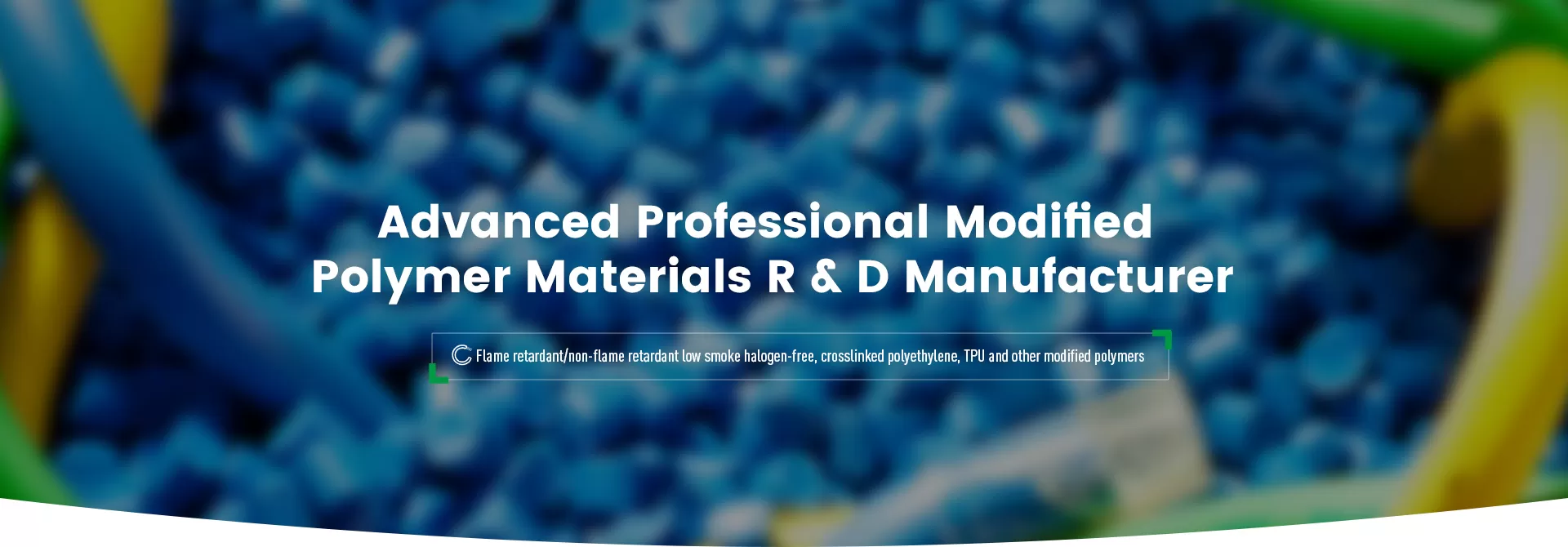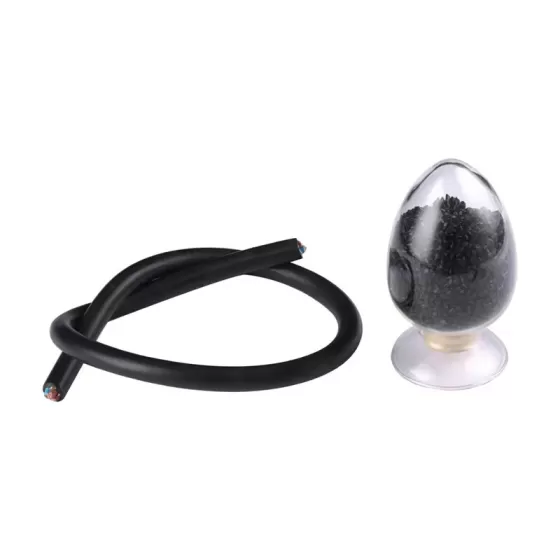

This product is made of ionized resin as the base material, with halogen-free flame retardant, cross-linking agent, antioxidant and other additives added through mixed plasticization and granulation. It does not contain heavy metals and other harmful substances, and has excellent mechanical properties, electrical properties and wide processing temperature margin.
Charging Pile Cables, High-voltage and low-voltage cables in new energy vehicles.
XL-TPE, or cross-linked Thermoplastic Elastomer, is a cross-linked modified TPE that combines the softness and elasticity of TPE with the high temperature and chemical resistance of cross-linked materials. This material has potential application value in the wire and cable industry, especially in applications that require materials with excellent mechanical properties and temperature resistance.
Improved Heat Resistance: Cross-linked TPE materials generally have higher heat resistance than ordinary TPE and can withstand higher operating temperatures.
Enhanced mechanical properties: The cross-linked structure can improve the tensile strength and abrasion resistance of the material, making it more durable in applications such as cable sheathing.
Improved chemical resistance: Cross-linked TPE materials may have better resistance to chemicals and are suitable for cables in special chemical environments.
Better resistance to environmental stress cracking: The cross-linked structure helps improve the material's ability to resist environmental stress cracking, which is very important for the long-term stability of cables.
In the wire and cable industry, XLTPE materials can be used to manufacture various types of cables, including but not limited to communication cables, power transmission cables, and special cables for specific environments. Due to its excellent comprehensive properties, XLTPE material helps to improve the service life and reliability of cables.
| NO. | Testing items | VALUE | Typicalvalue | UNIT | Method |
| 1 | Density (20℃) | 1.38+0.05 | 1.38 | g/cm3 | GB/T 1033 |
| 2 | Hardness | 8543 | 85 | 15A | GB/T2411 |
| 3 | Tensile strength | >8 | 13.5 | MPa | GB/T 1040.2 |
| 4 | Elongation at break | >200 | 320 | % | GB/T 1040.2 |
| 5 | Hot extension 250℃,0.2Mpa,15min | ||||
| The elongation rate under load | <100 | 50 | % | GB/T 2951.21 | |
| Permanent rate of change after cooling | <15 | 0 | % | ||
| 6 | heat deterioration 135℃、120℃,168h | ||||
| Rate of change in the tensile strength | <130 | 12 | % | GB/T2951.12 | |
| Rate of change of fracture elongation | <130 | 10 | % | GB/T2951.12 | |
| 7 | Impact, brttlement temperature (-40℃) | <15/30 | 0/30 | GB/T 5470 | |
| 8 | Volume resistivity(20℃) | 21.0x10-4 | 1.5x105 | 2*m | GB/T 1410 |
| 9 | Dielectric strength(20℃) | >25 | 35 | MV/m | GB/T1408.1 |
| 10 | HCl and HBr gas releases | <2 | 0 | mg/g | GB/T17650 |
| 11 | PHCombustion gas PH | >4.3 | 5.8 | / | GB/T17650 |
| 12 | Combustion gas conductivity | <10 | 5 | pus/mm | GB/T17650 |